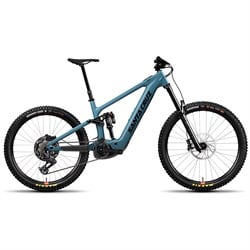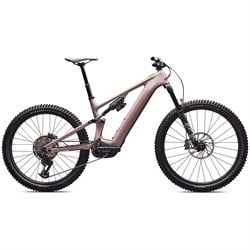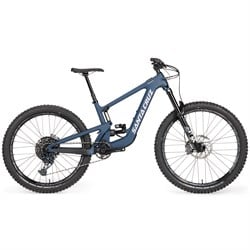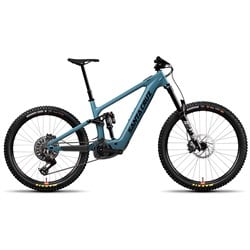What Is an eBike?

At its core, an ebike is a regular bike enhanced with an electric motor, a battery, and a control system that deliver extra power to assist the rider. This can help riders tackle hills with less effort, ride longer distances, or simply arrive at their destination without breaking a sweat. Think of them as bikes with a built-in tailwind, making each ride a little easier while still offering the health benefits of physical activity.
eBikes offer a practical and eco-friendly solution whether you're a commuter looking to ditch traffic, an outdoor enthusiast seeking adventure, or simply someone who wants to ride with more confidence.
There are a ton of different types of ebike out there. If you're looking for a boost on mountain bike trails, check out our full e-mountain bike guide for information on how to find the right ebike for you.
eBike Classes
eBikes are divided into three main "classes" defined by their maximum speed, and whether or not they have a throttle. These classes apply to all types of ebikes with pedal assistance, including e-mountain bikes. It is important to choose the right class of ebike, not only to suit your needs, but to comply with the rules and regulations where you will be riding.
Class 1 eBikes
Class 1 ebikes are pedal assisted, which means that the motor only kicks in while you’re pedalling. These bikes provide assistance up to a maximum of 20mph. Class 1 ebikes are allowed on many bike paths and trails depending on location.
Class 2 eBikes
Like Class 1 ebikes, Class 2 ebikes are pedal assisted up to 20mph, but they have one major difference – Class 2 ebikes also have a throttle. The throttle on these types of ebikes can vary between buttons or twist-grips, with either design delivering power without having to use the pedals. Class 2 ebikes are more restricted in their usage than Class 1 ebikes because of the throttle, and may not be allowed on bike paths or trail systems.
Class 3 eBikes
Class 3 ebikes offer the fastest pedal-assisted speeds, topping off at 28mph. This means you can enjoy the benefit of pedal assist until you reach 28mph. Class 3 ebikes do not have a throttle, but the higher maximum speed means their use is more heavily restricted on shared trails.
Where Can You Ride an eBike?
eBike laws vary from state to state, county to county, and even town to town, so it's important to look up the rules and regulations for your local area.
Some trail systems restrict access to all ebikes, while others restrict access to certain types of ebike, such as those with a throttle. Generally speaking, you can expect Class 1 ebikes to enjoy the widest access. The higher speed limit of Class 3 ebikes means they are subject to the most restriction, such as being probhibited from shared use pathways. Regulations for ebikes are always evolving be sure to consult local authorities for the most up-to-date rules in your area.
For mountain bikers, different land managing agencies, like National Forests, BLM, and state agencies, have different rules and regulations. Learn more about where to ride an ebike with our ebike travel guide.

David Hewat - Digital Content Editor
David is a writer, editor, and gear nerd based in Seattle, WA. He can usually be found exploring local mountain bike trail systems on his trusty Transition Sentinel.








